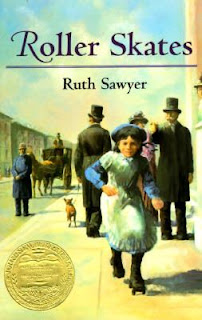To me, summer reading bring up images of shopping, ditsy female characters. and conveniently romantic scenarios. This summer, however, my selection of reading has been overwhelmingly about strong female narrators who make choices within rigid communities and find themselves in situations that are anything by typical. (Coincidence, I think not...) Challenge yourself to read some amazing literature this summer, and check out the list below.

The Girl Who Could Fly by Victoria Forester
Stephenie Meyer calls this book a cross between Little House and the Prairie and X-Men. Nothing is ever as it appears in this book, which makes it a delicious page-turner.
 Ten Things I Hate About Me by Randa Abdel-Fattah
Ten Things I Hate About Me by Randa Abdel-Fattah
 If I Stay by Gayle Forman
If I Stay by Gayle Forman

The Forest of Hands and Teeth by Carrie Ryan
After civilization ends, the world is populated by zombies. The community is the only thing keeping you safe from the wild elements. What happens when you begin to question the community? Like an onion (or a parfait), this book has so many layers that make it an amazing read.

The Girl Who Could Fly by Victoria Forester
Stephenie Meyer calls this book a cross between Little House and the Prairie and X-Men. Nothing is ever as it appears in this book, which makes it a delicious page-turner.
Two Girls of Gettysburg by Lisa Klein
A study in perspective since the story is told by two narrators, cousins from opposite sides of the conflict. In vivid detail, this book describes how life changed for ordinary people during the Civil War. This is historical fiction at its best.
A candid view into a isolationist polygamist community and the consequences of blind obedience to leaders. It is an intensely powerful book about the value of intellectual and emotional freedom.
Read Alis along with The Chosen One to compare and contrast a realistic fiction situation and a Orwellian Puritan future. Perhaps very little separates the reality from dismal post-Apocalyptic visions. Both books put female characters in impossible situations and show how they rise above their shackles.
The first book in an exciting new series by one of fantasy's best writers. Imagine the American frontier but with dragons, magic, and wizards.
A revolutionary novel, Skeleton Creek uses viral videos and the written word to tell this ghost story. Prepare to lose sleep after watching Sara's videos, but you'll love how you can interact with the book. The sequel comes out in the fall and I am already counting down the days.
Women warriors. Evil uncles. Hidden identities. What more could you want from a fantasy book?
 Ten Things I Hate About Me by Randa Abdel-Fattah
Ten Things I Hate About Me by Randa Abdel-Fattah No matter our nationalities or origins, we all feel like we live double-lives at some point, where there are elements of our culture that we cannot share with others. This book makes us feel less alone.
 If I Stay by Gayle Forman
If I Stay by Gayle Forman The plot sounds like a Nicholas Sparks novel, but reads like no other author. Listen to this one on CD, narrated by the fabulous Kirsten Potter, and you will think, laugh, and cry.

The Forest of Hands and Teeth by Carrie Ryan
After civilization ends, the world is populated by zombies. The community is the only thing keeping you safe from the wild elements. What happens when you begin to question the community? Like an onion (or a parfait), this book has so many layers that make it an amazing read.








 The Matchlock Gun retells the true story of the Van Alstyne family that has been passed down through generations. The Van Alstynes were Dutch pioneers who settled New York to escape political persecution. Teunis Van Alstynes is drafted to help the militia deal with Indian raids spurned on by the French. While Teunis is away, his wife and children must band together and defend themselves when the Indians attack*. Their mother, Gertrude, takes a pivotal role in keeping her children safe by leading the Indians within the range of the Matchlock Gun and instructing her son, Edward, in the perfect time to shoot it. While my modern sensibilities cringe at the sight of a child murdering anyone, maybe in this life or death situation, the brave thing is to strike fast.
The Matchlock Gun retells the true story of the Van Alstyne family that has been passed down through generations. The Van Alstynes were Dutch pioneers who settled New York to escape political persecution. Teunis Van Alstynes is drafted to help the militia deal with Indian raids spurned on by the French. While Teunis is away, his wife and children must band together and defend themselves when the Indians attack*. Their mother, Gertrude, takes a pivotal role in keeping her children safe by leading the Indians within the range of the Matchlock Gun and instructing her son, Edward, in the perfect time to shoot it. While my modern sensibilities cringe at the sight of a child murdering anyone, maybe in this life or death situation, the brave thing is to strike fast.








